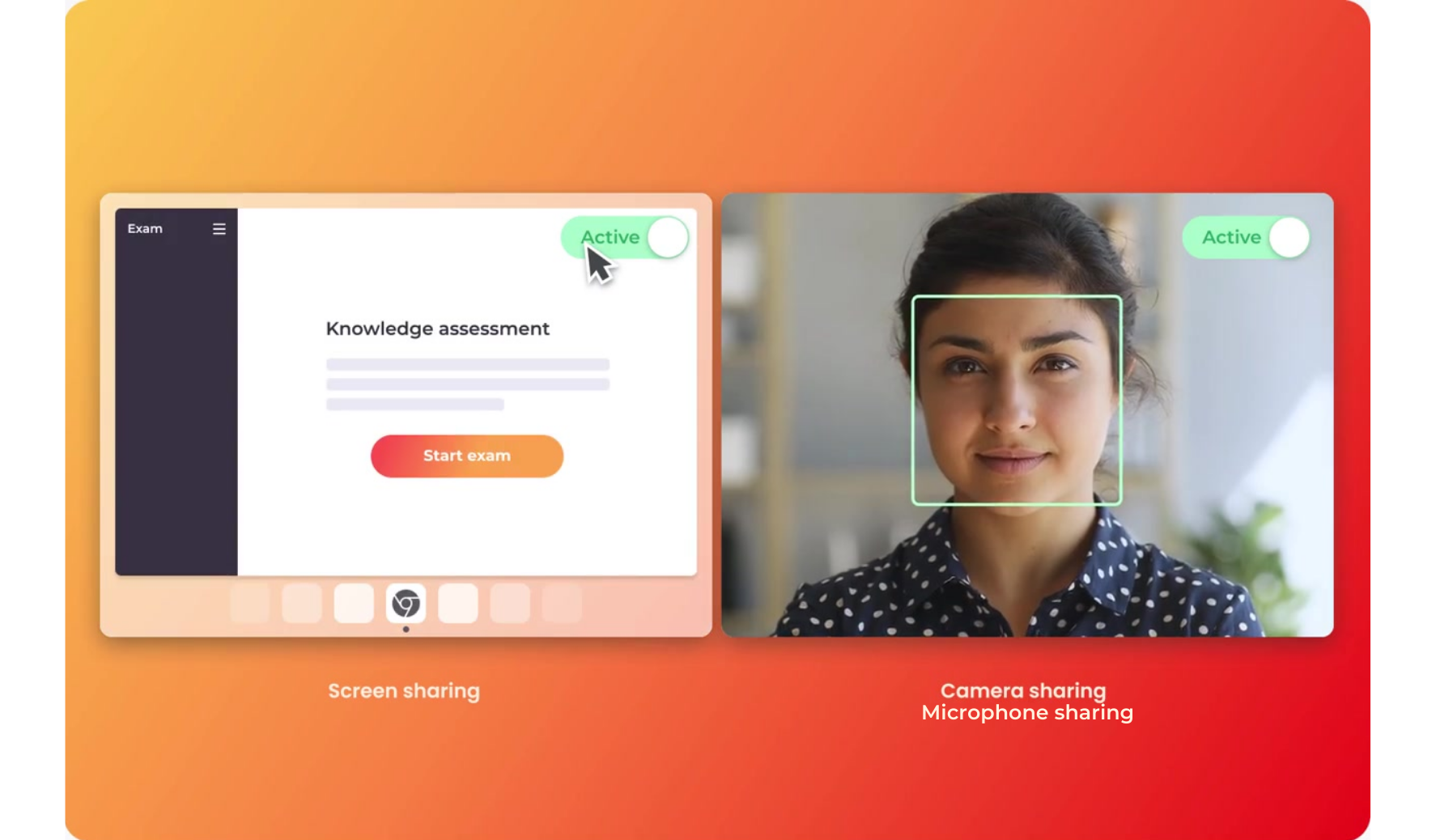With the rise in popularity of digital assessments within organizations, institutions are looking for the best monitoring tools during exam sessions. Some use lockdown browsers to restrict access, while others opt for live monitoring. At a time when people are becoming increasingly aware of the need to protect their personal data, automated asynchronous monitoring offers an effective, yet non-intrusive, solution for ensuring the integrity of the assessment process.
This article presents the types of recordings, their advantages and disadvantages, and other features for securing online assessments through asynchronous monitoring.
Types of recordings during assessment monitoring
Unlike real-time proctoring, asynchronous proctoring does not require the constant presence of proctors during the exam. Instead, the exam session is recorded to verify the integrity of the assessment process.
- Screen recording: All activity on the candidate’s screen is captured throughout the assessment. This feature ensures that all interactions are documented.
- Video and audio recording: Recording is done by the candidate’s built-in or external camera. This process can be completed by audio recording to capture the sound around the candidate.

After assessment, most online evaluation platforms use algorithms, or artificial intelligence, to analyze surveillance videos. Automatically detected events can then be validated by the assessment manager. These events are synchronized with the videos, facilitating subsequent review.
✅ Nexam also allows adding custom events and comments. An event can be bookmarked for future reference.
Advantages and disadvantages of asynchronous monitoring
Here is a summary table of the main advantages and disadvantages of asynchronous proctoring.
Advantages | Disadvantages |
|
|
|
|
|
|
|
|
ℹ️ Note : Data management and flexible analysis are key advantages that contribute to more effective assessment management.
✅ Nexam ensures video hosting for 30 days following the assessment session, after which they are automatically deleted in accordance with our information security policies and procedures.
Features to ensure integrity
Moving from a paper-based, in-person assessment to an online assessment platform with asynchronous monitoring can sometimes raise concerns. In addition to the monitoring described above, certain features can be enabled to ensure the integrity of the assessment process and limit unauthorized behavior. Key feature include:
Features | Description |
|
|
|
|
|
|
|
|
|
|
✅ Nexam offers advanced solutions for face framing, detecting multiple people on screen, and enabling additional modes.
Conclusion
Asynchronous monitoring offers an innovative way to ensure the integrity of online assessments, while respecting candidate privacy and reducing the need for dedicated human resources.
For more information on our automated asynchronous monitoring solution, or to discuss your specific online assessment security requirements, schedule a demo.
To learn more about transitioning to online exams, check out our comprehensive guide on successfully navigating this transition here: The Guide to a Successful Transition to Online Exams.
Need technical support? Visit our Help Center!!